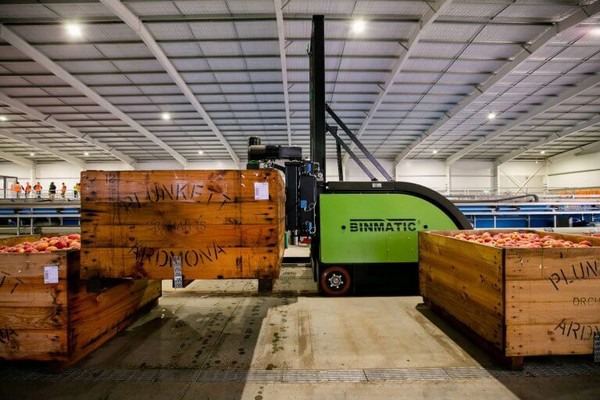Orchard businesses are making decisions all the time. When to apply water? What pests or diseases are present and when to apply control measures? Where is labour coming from? At the same time, growers are balancing costs with returns.
In another edition of APAL’s highly successful webinar series, which has been attended by over 200 people, Dr Zygmunt Szpak, from the University of Adelaide’s Institute for Machine Learning noted Artificial Intelligence’s ability to turbo charge observations made in the orchard.

There is no question that A.I is a large part of the future of horticultural production. Opportunities for smart tools to assist decision making tools include improving water or nutrient use efficiency based on sensor tools (precision horticulture), yield prediction and improved plant protection through better surveillance. In fact, 80 per cent of respondents in the poll conducted during APAL’s last week’s webinar indicated that they are ready to invest in new technologies for their orchard.
Automation, smart tools and robotics are being used more and more, but how are growers able to choose which technology to invest in?
Challenges
The first step is to identify where technologies should be incorporated. Each business has a number of tasks. Key decision points at which decisions are made most frequently are often the best place to install smart tools and to maximise the investment. The more structure and regularity in an orchard or packhouse, the easier it can be to automate.
It is also important to consider the workflow and the type of tasks being carried out. A,I technology can help with work intensification by taking over menial tasks. One example is sorting different quality fruit in the packhouse. Technologies can also help with work augmentation by assisting with decision making – for example data collection using soil moisture sensors can assist in making decisions about when and how much to irrigate. Technologies such as water sensors or those used in pest and disease surveillance can also help to notify growers about issues before they become a serious problem, thereby saving costs in the long term.
Grower interests
A challenge faced by developers of technologies is access to data in the context in which the tool will be used. By working together with growers and sharing data the better the decisions and predictions that are made by the technology tool. This may also assist in making sure the new technologies integrate with other systems used in the business (interoperability).
To choose which tool is best, Zygmunt suggests allowing companies to trial tools in your orchard and working together with technology developers to optimise the tools. It can also be beneficial for a number of growers to work together with technology developers to optimise the tools. Ultimately, the impacts of the technologies can lift the value of the entire region or industry.
Concerns have also been raised about how staffing, employment and labour will change as orchard businesses adopt more technology. Zygmunt says, concern about workers being displaced is unjustified. Yes, there are some tasks that may be replaced by machines, but people will be reallocated to different roles, requiring different skills, in areas they are comfortable.
APAL’s next webinar is on Thursday July 23, and focuses on a trial in Washington, U.S.A to assess the effects of netting on the light and temperature in the orchard and the implications for tree growth, productivity, and quality.
The webinar is free, but registration is essential. Click here to register.
Source: Apal.org
